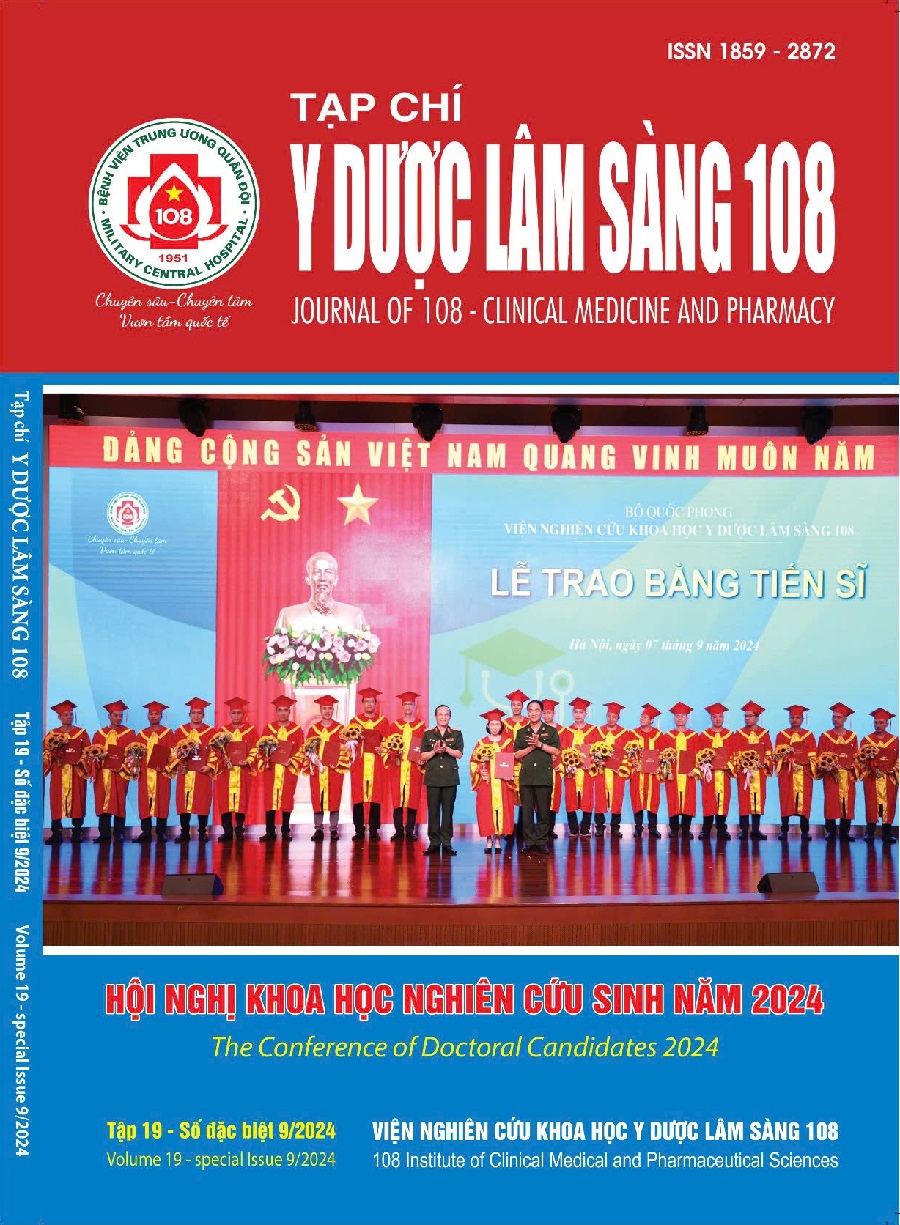Characteristics and value of multi-slice computed tomography in the evaluation of arterial injury in solid organ traumatic patients at Phu Tho Provincial General Hospital
Main Article Content
Keywords
Abstract
Objective: This study aims to evaluate the imaging characteristics and value of multi-slice computed tomography (MSCT) in diagnosing arterial injury in patients with solid organ trauma compared to digital subtraction angiography (DSA). Subject and method: A retrospective study was performed on 51 patients with clinical manifestations of solid organ trauma who were diagnosed with arterial injury on MSCT and then underwent DSA at Phu Tho Provincial General Hospital from January 2020 to December 2023. Result: The average age was 35.7 years; men accounted for 74.5%. The majority of patients were hospitalised with hemodynamic instability (60.1%). The most common traumatic organ was the liver (51%). There were 51 arterial lesions on MSCT, including active extravasation (80.4%) and pseudoaneurysm (19.6%). The sensitivity, specificity, and accuracy of active extravasation and pseudoaneurysm on MSCT compared to DSA were 97.6%, 91.7%, 96.2% and 90%, 97.7%, 96.2%, respectively. Conclusion: MSCT has high sensitivity, specificity and accuracy for diagnosing arterial injury in patients with solid organ trauma.
Article Details
References
2. Boonsinsukh T, Maroongroge P (2020) Effectiveness of transcatheter arterial embolization for patients with shock from abdominopelvic trauma: A retrospective cohort study. Annals of Medicine and Surgery 55: 97-100.
3. Dawoud MM, Salama AA, El-Diasty TA et al (2018) Diagnostic accuracy of computed tomography angiography in detection of post traumatic renal vascular injury. Egypt J Radiol Nucl Med 49(1): 232-238.
4. Duy Hung N, Minh Duc N, Van Sy T et al (2020) The role of computed tomography in arterial injury evaluation in solid organ trauma. Clin Ter 171(6):528-533. doi: 10.7417/CT.2020.2268.
5. Kobayashi LM, Costantini TW, Hamel MG et al (2016) Abdominal vascular trauma. Trauma Surg Acute Care Open 1(1): 000015. doi: 10.1136/tsaco-2016-000015.
6. Kozar RA, Crandall M, Shanmuganathan K et al (2018) Organ in-jury scaling 2018 update: Spleen, liver, and kidney. J Trauma Acute Care Surg 85(6): 1119-1122.
7. Marmery H, Shanmuganathan K, Mirvis SE et al (2008) Correlation of multidetector CT findings with splenic arteriography and surgery: prospective study in 392 patients. J Am Coll Surg 206(4): 685-693.
8. Roh S (2023) Endovascular embolization of persistent liver injuries not responding to conservative management: A narrative review. J Trauma Inj 36(3): 165-171.
9. Singh A, Prasad G, Mishra P, Vishkarma K, Shamim R (2021) Lessons learned from blunt trauma abdomen: Surgical experience in level I trauma centre. Turk J Surg 37(3): 277-285.
10. Thanh Dung L, Duy Hung N, Ly D (2022) Detection of arterial injuries in blunt abdominopelvic trau-ma: the value of computed tomography. LA CLINICA TERAPEUTICA 30(5): 422-429.
11. Nguyễn Mậu Định (2012) Điều trị can thiệp nội mạch các tổn thương mạch trong chấn thương tạng đặc. Tạp chí Điện Quang và Y học hạt nhân Việt Nam, Số 10-12/2012.
 ISSN: 1859 - 2872
ISSN: 1859 - 2872
